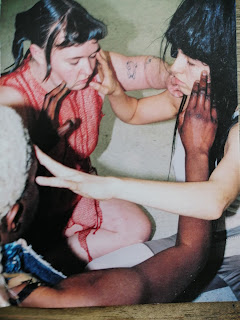Experience of the day: Slam Poetry Workshop

Yesterday I attended one of the Slam Poetry workshops, at Litteraturhuset, led by the artist and curator Michael W. Opara, also known as Doriansgrave. As usual, I do not have the intention of saying what the workshop was, but simply how I experienced it. If you want to know more about it, you can check this out . For me, it was a reminder that although it is hard, it is also important to challenge my writing process. I write almost every day. It has been like that for the last 23 years. By now my writing process has its rituals and a kind of chaotic structure. I read philosophy, poetry, biographies, novels, plays, and books that I do not know how to label… I read and I write. What I am reading tends to influence somehow the content of what I have to say in my own writing. Writing for me is also a conversation, with what I read, see, and listen to. Writing is also a huge part of my thinking process. There are times that I need to write in order to be able to think. I am the type of p




